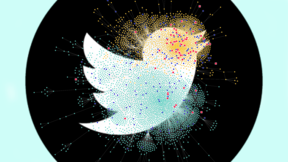Bots were not very active on Twitter during the Finnish municipal elections

Researchers from the Department of Computer Science in Aalto University and University of Helsinki Faculty of Social Sciences joined their forces in the ELEBOT-2021 project. They analyzed a large set of social media data and focused on automated accounts, so called ´bots´, on Twitter around the municipal elections from May until June 2021.
Bots produce either real or distorted information in an automatized manner. They are a notorious form of information operations that aim to influence, for example, election results. In addition to bots, the research team was interested in the number of suspended accounts, which have violated the rules of Twitter.
Low number of bots is not itself that surprising
According to the report, the absolute number and influence of Twitter bots on political discussions around the municipal elections remained low. The findings are in line with results from previous analyses in 2019, when researchers from Aalto analyzed discussions before and during the Finnish Parliamentary elections.
In the Finnish municipal elections, only 11.7 percent of tweets created by bots were retweeted at least once. The level of occurrence is low compared to, for example, the US mid elections held in November 2018. In the US elections, more than 35 percent of bots’ tweets were retweeted.
The results of this study were sort of expected, states Antti Gronow, Senior Researcher from the University of Helsinki.
Even though this research did not offer big surprises, key results can be interpreted as significant from the perspective of democracy.
“Low activity of bots was good news for us. It means that there are no wide-scale automated information operations in the social media aimed at influencing our political system”, Gronow says.
The number of bots slightly differed between opinion bubbles
Bots and suspended accounts were also examined from the perspective of opinion bubbles. Opinion bubbles are formed when political opinions are polarized to the extent that people fall into two opposing camps. Previous research on opinion bubbles has shown that they can be susceptible to the influence of bots.
The present analysis focused on opinion bubbles around the biggest Finnish political parties as well as two thematical areas: immigration and environmental issues, including climate change.
While bots’ activity remained low also in the case of opinion bubbles, the report revealed that bot-like accounts were most common in opinion bubbles formed around the supporters of the Finns Party and the National Coalition party, and in those that oppose the Green League and leftist parties. Bots were also more common in bubbles that were critical of climate change policies and immigration compared to those that favored them.
For instance, in the Twitter user group that had a positive outlook on immigration, bots counted for only 2.5 percentage of users. Respectively, in the group with more critical views on immigration, bots counted for 4.7 percentage of all users.
Bots are not easy to spot
The study also provided new information on the technical limitations of bot identification. These challenges need to be addressed in the future, says Mikko Kivelä, Assistant Professor at the Department of Computer Science.
”We may have failed to recognize some bots. On the other hand, some basic Twitter users may have accidentally been labeled as bots, because of their accounts had features typical for bots”, Kivelä states.
A major problem in identifying bots is that the used methods do not recognize Finnish words and expressions. Thus, there exists a need for a tool that could analyze the content of Finnish tweets.
The researchers collected and analyzed a total of 1 124 550 tweets, posted between May and June 2021. The ELEBOT-2021 project was funded by the Finnish Ministry of Justice.
Link to the ELEBOT-2021 report.
More information:
Associate professor Mikko Kivelä, Aalto University, Department of Computer Science, mikko.kivela@aalto.fi
Senior researcher Antti Gronow, University of Helsinki, Department of Social Sciences, antti.gronow@helsinki.fi
Read more news

Research Council of Finland establishes a Center of Excellence in Quantum Materials
The Centre, called QMAT, creates new materials to power the quantum technology of coming decades.
Major funding powers development of next-generation machine technology aimed at productivity leap in export sectors
The BEST research project is developing new types of sealing, bearing, and damping technology.
The TAIMI project builds an equal working life – a six-year consortium project seeks solutions to recruitment and skill challenges
Artificial intelligence (AI) is changing skill requirements, the population is aging, and the labor shortage is deepening. Meanwhile, the potential of international experts often remains unused in Finland. These challenges in working life are addressed by the six-year TAIMI project funded by the Strategic Research Council, and implemented by a broad consortium.






